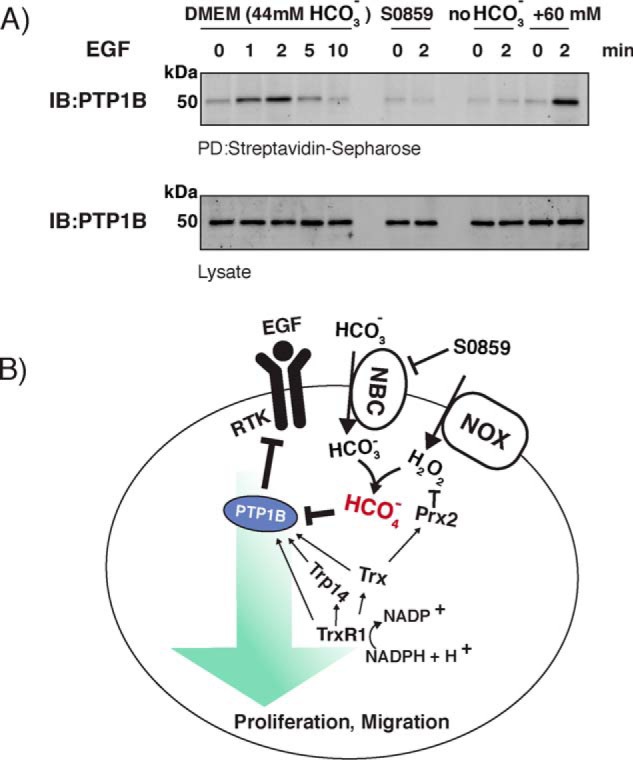Figure 6.

A, bicarbonate is required for EGF-dependent reversible PTP1B oxidation in A431 cells. A431 cells were incubated overnight either in low-serum regular DMEM-containing bicarbonate or in HEPES-buffered DMEM (50 mm, pH 7.4). Pretreatment of the cells in bicarbonate-containing DMEM with the NBC inhibitor S0859 (50 μm) was for 1 h prior to stimulation. Bicarbonate (60 mm) was added to cells in HEPES-buffered DMEM and subsequently stimulated. At the indicated times after EGF stimulation, cells were subjected to the cysteinyl-labeling assay using biotinylated iodoacetyl-PEG2-biotin for analysis of reversible PTP1B oxidation. Biotinylated proteins were purified on streptavidin-Sepharose beads, resolved by SDS-PAGE, and visualized using antibodies against PTP1B. PTP1B control levels were determined from total cell lysate by SDS-PAGE and blotting (IB) against PTP1B. Representative Western blotting of three independent experiments is shown. B, model for regulation of PTP1B activity during growth factor signaling. EGFR activation induces a transient burst of H2O2, which reacts with bicarbonate to give PTP1B oxidation via peroxymonocarbonate (red) and activation of phosphorylation pathways (green arrow). Prxs compete for the H2O2, and the Trx system decreases the availability of H2O2 by supporting the Prx cycle and also acts by reactivating oxidized PTP1B. See “Discussion” for further details.
